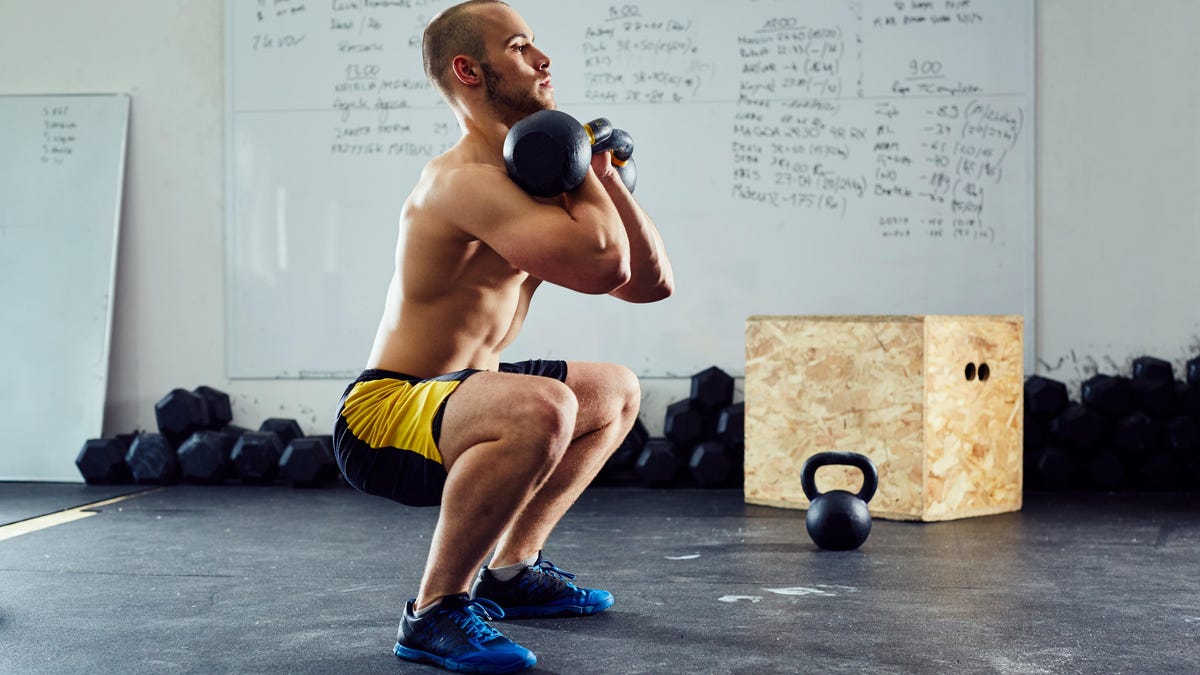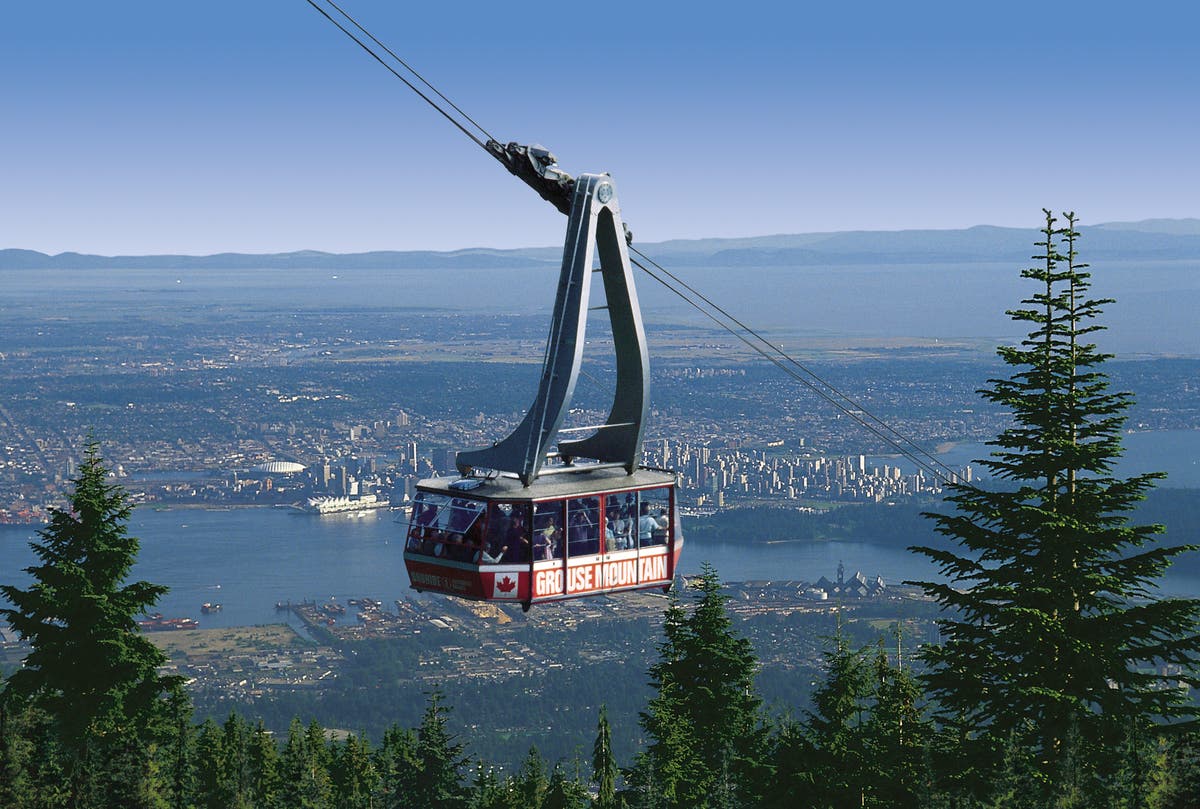17 of the Most Underrated Squats You Should Try
Squats are one of the very best lower body exercises out there, and if you’ve ever worked out at all, you’ve certainly done them. But too many of us have never broadened our horizons beyond the humble air squat...


Photo: baranq (Shutterstock)
Squats are one of the very best lower body exercises out there, and if you’ve ever worked out at all, you’ve certainly done them. But too many of us have never broadened our horizons beyond the humble air squat and barbell back squat—and if that’s you, you’re missing out.
So take a look at these 17 lesser-known squats, which run the gamut from bodyweight moves, to heavy variations that require special equipment, to ingenious uses of kettlebells and dumbbells.
Front squats
The front squat is a classic of Olympic weightlifting programs. Instead of resting the barbell on your back, you put it on your shoulders. (Hence the name, because the barbell is on your front instead of on your back.)
Too many people shy away from front squats because they look like they would hurt your wrists. That’s a shame, because they’re a great workout for your quads and your core. Not to mention: The bar is actually resting on your shoulders, not held in your arms, so the holding position is easier than you’d think once you figure it out.
Goblet squats
These are the at-home version of front squats. You hold a kettlebell or dumbbell in front of you, and squat down as low as you comfortably can. These are my favorite squat to use when introducing somebody to the move. Something about holding a weight in front of you makes it easier to balance and to hit depth than a regular old air squat.
Somersault squats
Okay, technically these might not be a “squat” at all, but they have “squat” in the name, and they’re a truly underrated leg exercise. Setting them up is a bit tricky, so pay attention to Joe’s positioning in the video. You’ll have your forearms in your hip creases, and you don’t actually extend your hips at all. Just straighten your legs until your head is pointed at the ground. These are the closest thing to a leg extension you can find outside of a gym.
Safety bar squats
The safety bar was invented to let powerlifters keep squatting even if they had shoulder or wrist pain that made it hard to hold a barbell on their back. This padded specialty bar rests on your back without requiring you to hold it there (although there are handles in the front for peace of mind).
Belt squats
Here’s another hands-free variation that’s great for working around an injury, or for getting in extra volume for your legs when your upper body is tired. A belt squat requires a machine where you hook up a belt around your hips to a pulley that’s attached to weight. There are also ways to improvise a belt squat in a gym that doesn’t have a dedicated machine, like with a landmine attachment.
7 / 19
Kettlebell front rack squats
Kettlebell front rack squats
Here’s another kettlebell option (and you can do something similar with a pair of dumbbells, if you like). Instead of holding just one kettlebell in your hands, use a pair of kettlebells, and clean both of them into a rack position so they are resting on your upper arms. Then go into a squat, while keeping your elbows up so that the kettlebells don’t fall. It’s like a goblet squat, only worse.
Box squats
In a box squat, you squat down until your butt touches a box (like a plyometric box; you could also substitute a bench or a stack of plates at an appropriate height). Depending on the variation you’re doing, you can either sit down to rest all your weight on the box before standing back up; or you can try to keep tension and only touch the box lightly.
A box squat eliminates the stretch-shortening reflex that we usually use when we get a bit of a bounce out of the bottom of a squat, but it’s also a good variation if you have an injury or issue where you only want to squat to a specific depth and not all the way down.
Jump squats
Jump squats are a plyometric exercise, where you drop into a full squat before exploding upwards. They’re a good way to add difficulty to an unweighted squat, and some advanced athletes will even add weight to them.
Pistol squats
If you can do a two-legged squat with your own bodyweight on your back, you should be able to do an unweighted squat on just one leg, right? As logical as that thought is, single-leg squats are way harder than they have any right to be. Pistol squats require strong stabilizing muscles, good balance, and (if you want to hit full depth) good ankle flexibility. You also need enough strength in your hip flexors to hold your free leg off the ground. So if you’re looking for a new challenge, give pistol squats a try.
One-leg stand-ups
This is my name for what might otherwise be called a bottoms-up box pistol squat. But that just sounds so complicated! In a one-leg stand-up, you start in a seated position on a bench or box. Then you put one leg on the ground, hold the other out in front of you, and stand up. If that’s too easy, hold a kettlebell on your shoulder. These are a great way to work on the strength and balance needed for pistol squats when you can’t do a full pistol yet.
12 / 19
Low bar or high bar squats
Low bar or high bar squats
There are two common ways to place the bar for back squats. Either you squeeze your traps together (the muscles at the base of your neck) to make a little shelf for the bar, or you place the bar down on your rear deltoids, basically behind your shoulders. The first of these is called a high bar squat, and the second is low bar.
If you’ve only been doing your squats one way, consider the other next time you’re looking for a variation. The high bar squat keeps your torso more vertical, and is more similar to a front squat. The low bar squat lets you use your back and butt a bit more, making it a little more like a deadlift. Both are great ways to squat, so try the one you don’t usually do.
Overhead squats
Another variation from the world of Olympic lifting, an overhead squat is exactly what it sounds like: squatting while holding a weight overhead. These are often done with a wide grip, because that’s how you’ll stand up from a successful snatch. You can also do these with a pair of dumbbells or kettlebells, which adds the difficulty of stabilizing two different weights.
Platz squats
If you want a squat variation that hits the quads even more than a typical squat, try Platz squats. You’ll stand with your heels elevated on a plate (yes, even if you normally lift in heeled shoes), use a narrow stance, and place the barbell in the high-bar position. Enjoy the burn.
15 / 19
Pause squats and tempo squats
Pause squats and tempo squats
These simple variations are underrated ways to make a squat harder, thus allowing you to use less weight. As a result, they’re often included in powerlifting programs as a way of reducing the intensity of a workout. (After all, you can’t load the bar too heavy when you know you have to do your squats in slow motion.) Pauses and tempos can also help with balance and positioning.
Tempo squats are often written with numbers saying how many seconds to spend on each part of the lift. A 3-0-3 tempo squat would mean it takes you three seconds to get to the bottom, then you spend zero seconds paused at the bottom, and then you take three agonizing seconds to stand back up.
Quarter squats
To say a person is “quarter squatting” is often an insult, implying that the person is trying to hit depth on their squats and failing. But quarter squats are also a legitimate training tool. You only go a quarter of the way to full depth (or sometimes halfway; this isn’t rocket science). This means you can load a quarter squat a lot heavier than you could load a full squat, and give your muscles more work to do in the upper range of motion.
Quarter squats are used in jumping and sprinting sports, which makes sense when you realize that you don’t drop into a full squat when you jump; you just bend your legs a bit, in the same range of motion as a quarter squat. My own coach recently replaced some of my full squats with quarter squats, and my legs got a lot stronger. I believe.
Bulgarian split squats
I’ve left lunges and step-ups off this list, even though they work a lot of the same muscles as squats. But I need to make room for this hybrid move, the Bulgarian split squat, also called a rear-foot-elevated split squat. They’re annoying to set up, since you need a weight on your back (or in your hands) and one foot on a bench behind you. But they work wonders: your adductors, abductors, hamstrings, and quads all need to work at the same time—not to mention your core, to keep you upright. These are my go-to if I’m stuck at a hotel gym with a limited amount of weight.
Zercher squats
Zerchers are definitely one of the lesser-known squats that deserves to be better known. Yeah, they’re hard on your elbows, but you’ll get over it. (I like to wear a hoodie to cover my elbows, and then a pair of knee sleeves over top.) The weight is in front of you, like a front squat, but the placement means you can hinge your body forward instead of needing to stay totally upright. They are, in effect, a low bar front squat. And if you’re stuck in a place with a barbell and no rack, they’re your best option for squatting a ton of weight without having to clean it or Steinborn it into position.

 Troov
Troov 



















.jpg&h=630&w=1200&q=100&v=6e07dc5773&c=1)












